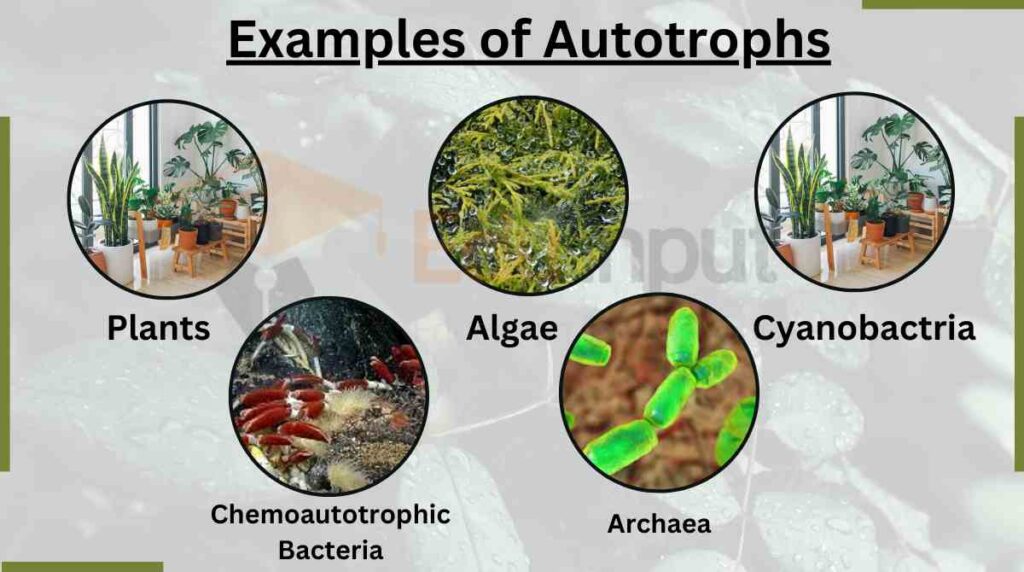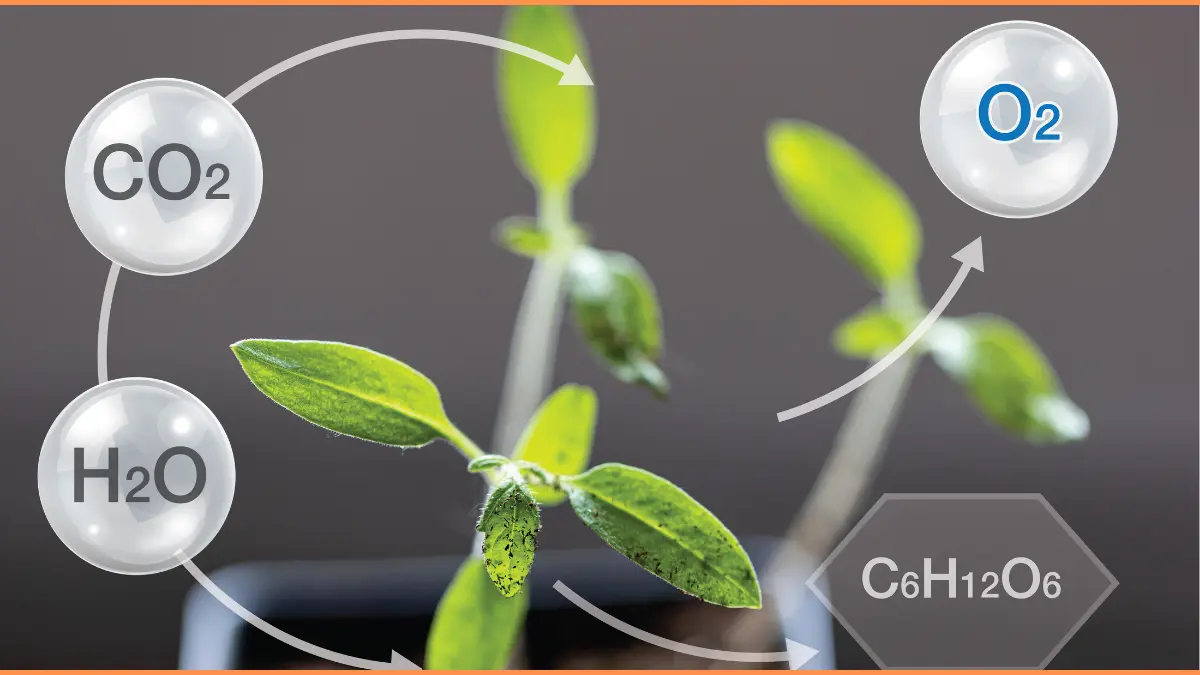Autotrophs-Origin, Type, and Examples
Autotrophs are living organisms that have the ability to produce organic compounds (glucose) using inorganic substances (water and carbon dioxide) through Photosynthesis or chemosynthsis.

Origin of Autotrophs
Autotrophs, such as cyanobacteria, emerged around 2.7 to 2.4 billion years ago during the Great Oxygenation Event. They developed the ability to carry out photosynthesis, producing oxygen as a byproduct.
This oxygenation of the atmosphere enabled the evolution of more complex life forms. The exact origin of autotrophs is still being studied, with various theories proposed, including the endosymbiotic theory.
Autotrophs are believed to have originated as thermophilic and anaerobic chemo-lithoautotrophs in deep-sea alkaline hydrothermal vents. These organisms used catalytic minerals to produce biomolecules like RNA.
The last universal common ancestor (LUCA) was likely a thermophilic anaerobe dependent on Fe, H2, and CO2, with a Wood-Ljungdahl pathway. The transition from autotrophs to heterotrophs occurred under low H2 conditions, and photosynthesis emerged in the presence of geothermal light at hydrothermal vents.
Types of Autotrophs
Autotrophs can be classified into two main types based on the source of energy they utilize.

Photoautotrophs
Photoautotrophs are organisms that utilize photosynthesis to produce complex organic compounds like carbohydrates, fats, and proteins from inorganic substances and light energy. The process can be summarized by the equation:
6CO2 + 12H2O + energy = C6H12O6 + 6O2 + 6H2O.
Chlorophyll is the primary light-capturing pigment in photoautotrophs. It is located within specialized organelles called chloroplasts. Chlorophyll gives the cells a green color. It is responsible for absorbing light energy. Photoautotrophic cells also contain accessory pigments like carotenoids and phycobilins, which assist in light absorption and transfer energy to chlorophyll-rich complexes called light-harvesting antenna complexes.
Photoautotrophs obtain inorganic sources such as carbon dioxide, inorganic salts, and water. Light energy, from natural sources like sunlight. However, advancements in science have introduced artificial light sources, such as LEDs, which can stimulate photosynthesis even in the absence of natural light.
Chemoautotrophs
Chemoautotrophs derive energy from inorganic chemical reactions instead of sunlight. They are commonly found in environments devoid of sunlight, such as deep-sea hydrothermal vents.
Chemoautotrophs use inorganic compounds such as hydrogen sulfide, ferrous iron, and ammonia as energy sources. They employ specialized enzymes to extract energy from these chemicals, driving their metabolic processes.
Chemoautotrophs are often found in extreme environments, such as deep-sea volcanic vents, where high temperatures and harsh conditions prevail. Their ability to survive in such hostile habitats showcases their adaptability and metabolic capabilities.
Examples of Autotrophs
Here are a few examples of autotrophic organisms:

1. Plants
Plants are familiar autotrophs that are found in various environments. They have specialized structures called chloroplasts containing chlorophyll, which helps them to capture sunlight. Through photosynthesis, plants convert sunlight, carbon dioxide, and water into glucose and release oxygen as a byproduct.
2. Algae
Algae are autotrophic organisms that predominantly live in aquatic environments such as ponds, lakes, and oceans. They are found in different forms, including microscopic species and large seaweeds. Like plants, algae use chlorophyll to capture sunlight energy and convert it into chemical energy through photosynthesis.
3. Cyanobacteria
Cyanobacteria are also known as blue-green algae (although they are not true algae). They are single-celled autotrophic bacteria. They can be found in diverse habitats, including water bodies and soils. Cyanobacteria are photosynthetic and use sunlight, carbon dioxide, and water to produce their own food and release oxygen. Some species of cyanobacteria can also fix atmospheric nitrogen and convert it into a usable form for other organisms.
4. Chemoautotrophic Bacteria
Chemoautotrophic bacteria are a unique group of autotrophs that obtain energy from inorganic chemical reactions instead of sunlight. They are commonly found in extreme environments such as deep-sea hydrothermal vents. These bacteria use hydrogen sulfide, ferrous iron, and ammonia as energy sources. Through chemosynthesis, they convert these inorganic substances into organic compounds, sustaining themselves in environments where sunlight is absent.
5. Some Archaea
Certain types of archaea (microorganisms that resemble bacteria) are also autotrophs. They can be found in extreme environments such as hot springs or deep-sea hydrothermal vents. Similar to chemoautotrophic bacteria, these archaea derive their energy from inorganic chemical reactions. They convert substances like hydrogen, sulfur, or methane into organic compounds through unique metabolic processes, allowing them to survive in these challenging habitats.
Latest Research on Autotrophs
- Scientists analyzed 240 experiments on reduced light availability for marine primary producers, revealing a 23% decrease in biomass-related performance but no significant impact on physiological performance. The findings provide a log-linear relationship that aids in predicting future marine primary production in changing light conditions. [1]
- Scientists have discovered that denitrification has a significant impact on autotroph-heterotroph interactions and metabolic activities within Microcystis aggregates, emphasizing the role of nutrient conditions in shaping these relationships. [2]

 written by
written by 



Leave a Reply